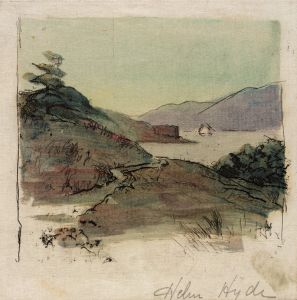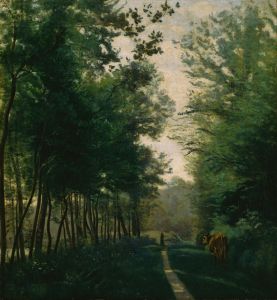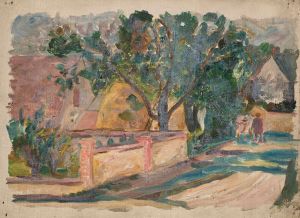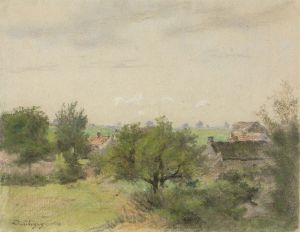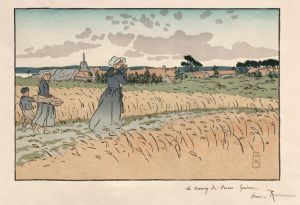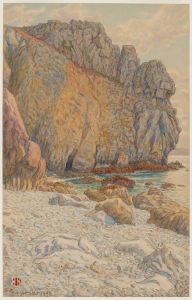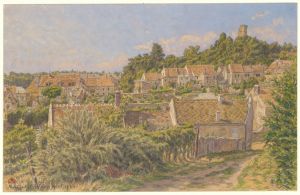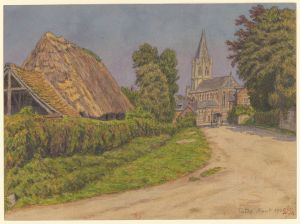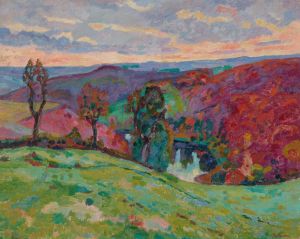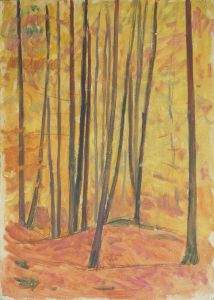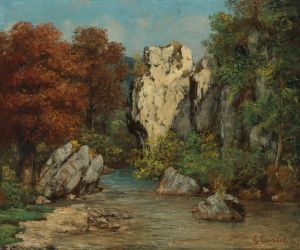
Bormes
A hand-painted replica of Henri Rivière’s masterpiece Bormes, meticulously crafted by professional artists to capture the true essence of the original. Each piece is created with museum-quality canvas and rare mineral pigments, carefully painted by experienced artists with delicate brushstrokes and rich, layered colors to perfectly recreate the texture of the original artwork. Unlike machine-printed reproductions, this hand-painted version brings the painting to life, infused with the artist’s emotions and skill in every stroke. Whether for personal collection or home decoration, it instantly elevates the artistic atmosphere of any space.
Henri Rivière (1864-1951) was a prominent French artist known for his contributions to the field of printmaking and his association with the Post-Impressionist movement. One of his notable works is "Bormes," a piece that exemplifies his mastery in capturing the essence of the French landscape through his unique artistic techniques.
"Bormes" is a color lithograph created by Rivière, who was deeply influenced by Japanese ukiyo-e prints, which is evident in his use of bold lines, vibrant colors, and attention to detail. The artwork depicts the picturesque village of Bormes-les-Mimosas, located in the Provence-Alpes-Côte d'Azur region of southeastern France. This village is renowned for its charming medieval architecture, lush vegetation, and stunning views of the Mediterranean Sea.
Rivière's "Bormes" showcases his ability to blend traditional European artistic elements with the stylistic influences of Japanese art. The composition of the lithograph is carefully balanced, with a harmonious interplay of natural and architectural elements. The village's terracotta rooftops and stone buildings are nestled amidst a verdant landscape, with the distant sea visible on the horizon. Rivière's use of color is particularly striking, as he employs a palette that captures the warm, sunlit ambiance of the Mediterranean region.
The artist's technique in "Bormes" involves the use of multiple lithographic stones, each inked with a different color, to create a rich and layered image. This method allows for a high degree of precision and depth, resulting in a print that is both vibrant and detailed. Rivière's meticulous approach to printmaking is evident in the intricate textures and patterns that define the foliage, architecture, and sky in the artwork.
Henri Rivière was a member of the artistic circle known as the Nabis, a group of Post-Impressionist artists who sought to break away from traditional academic art and explore new forms of expression. His work, including "Bormes," reflects the Nabis' emphasis on decorative qualities, simplified forms, and the use of color to convey mood and atmosphere. Rivière's interest in Japanese art also aligns with the broader Japonisme movement that influenced many Western artists during the late 19th and early 20th centuries.
"Bormes" is a testament to Rivière's skill as a printmaker and his ability to capture the beauty of the French landscape. The artwork not only serves as a visual record of a specific place but also embodies the artist's innovative approach to combining different artistic traditions. Today, Henri Rivière's works, including "Bormes," are celebrated for their aesthetic qualities and their contribution to the development of modern printmaking.
In summary, "Bormes" by Henri Rivière is a color lithograph that depicts the village of Bormes-les-Mimosas in southeastern France. The artwork is characterized by its harmonious composition, vibrant colors, and intricate details, reflecting Rivière's mastery of printmaking and his influences from Japanese art and the Nabis movement.





